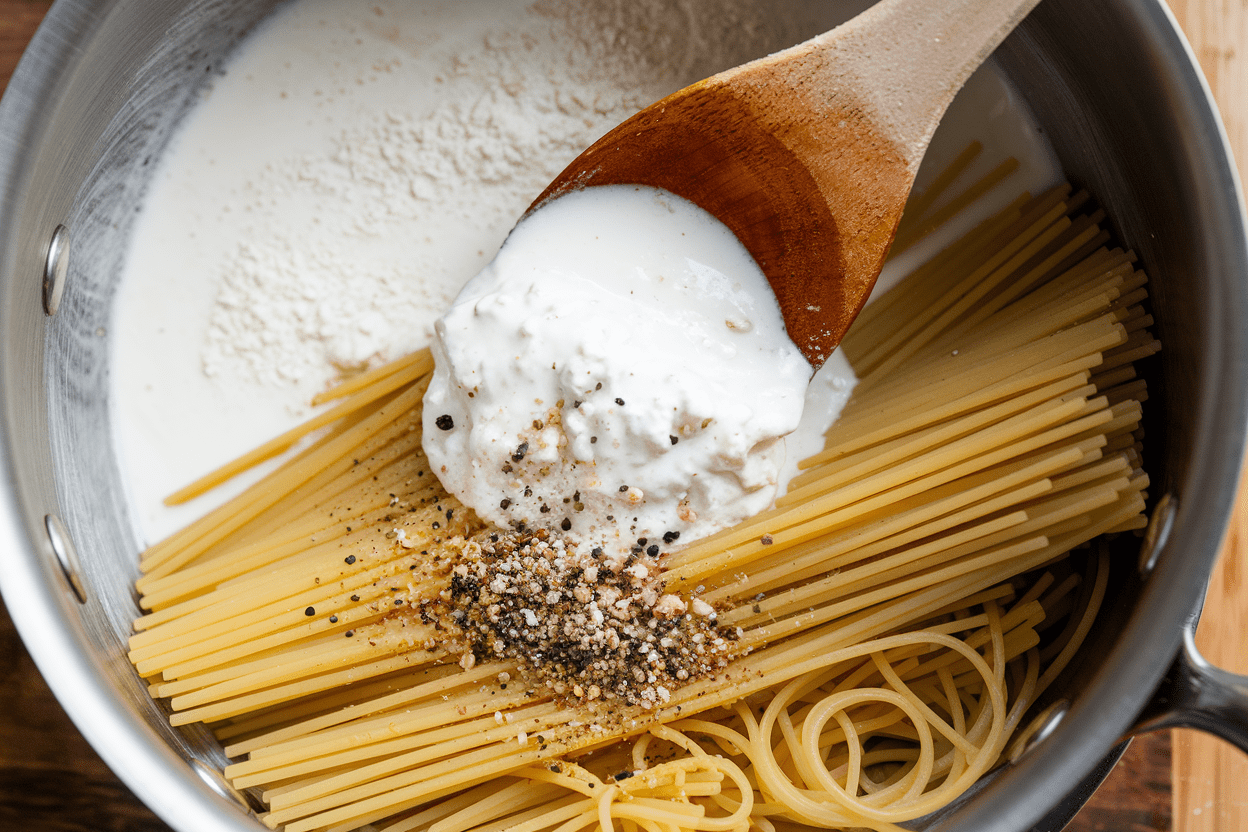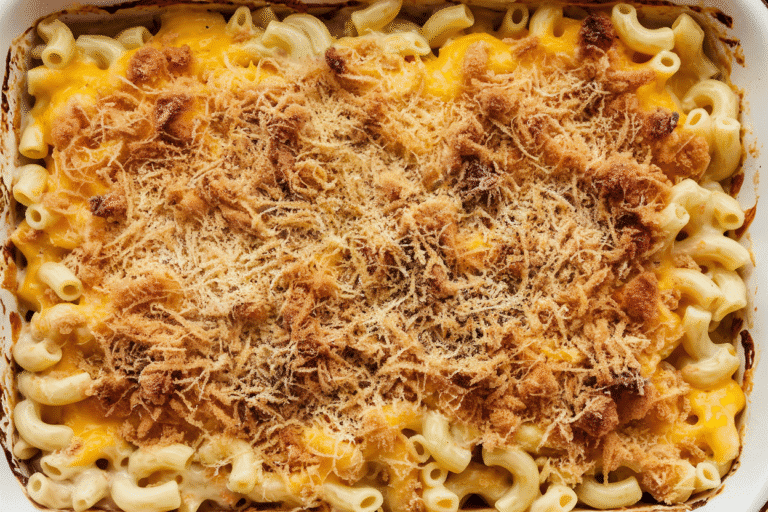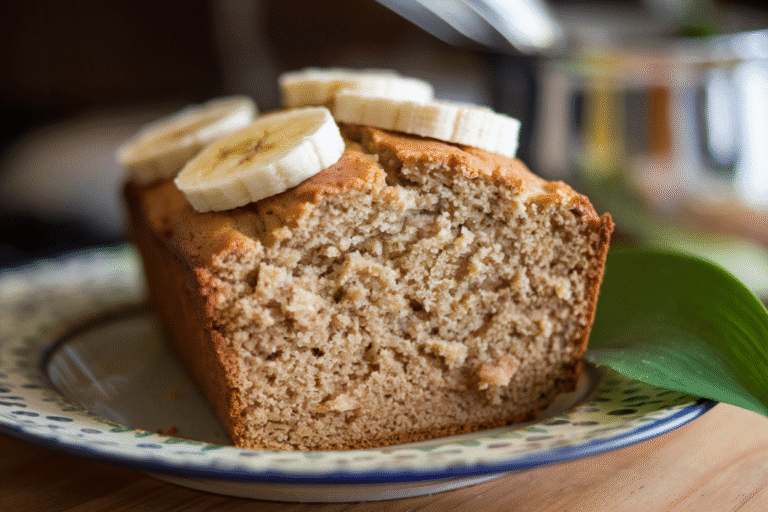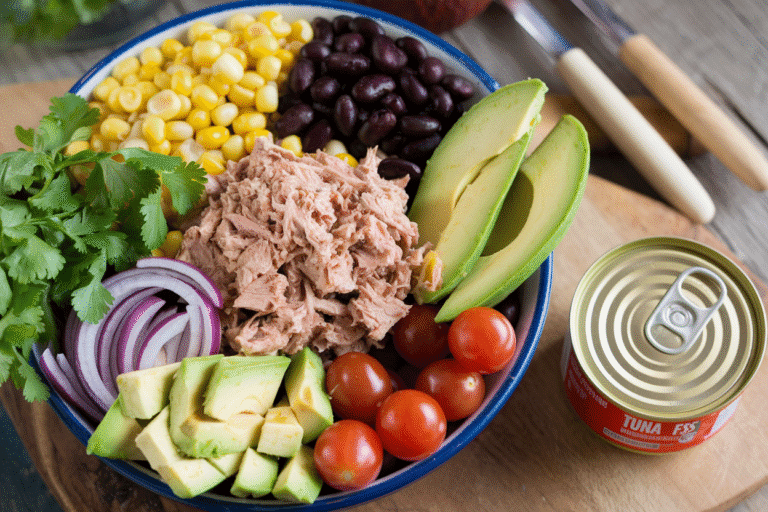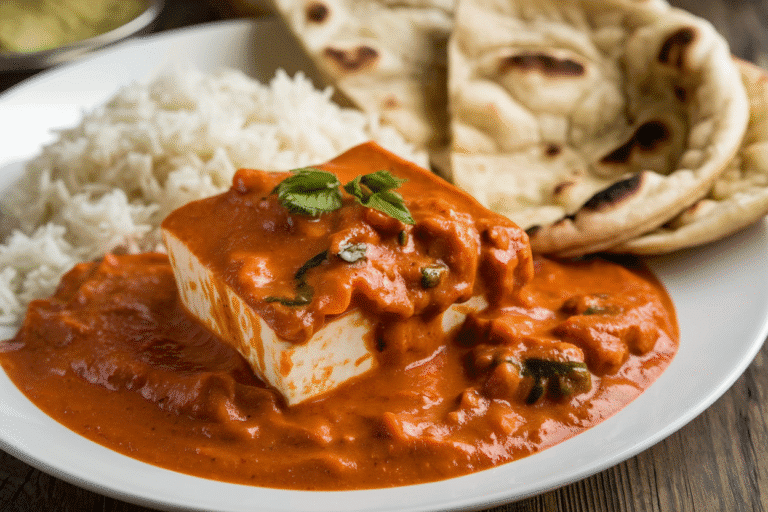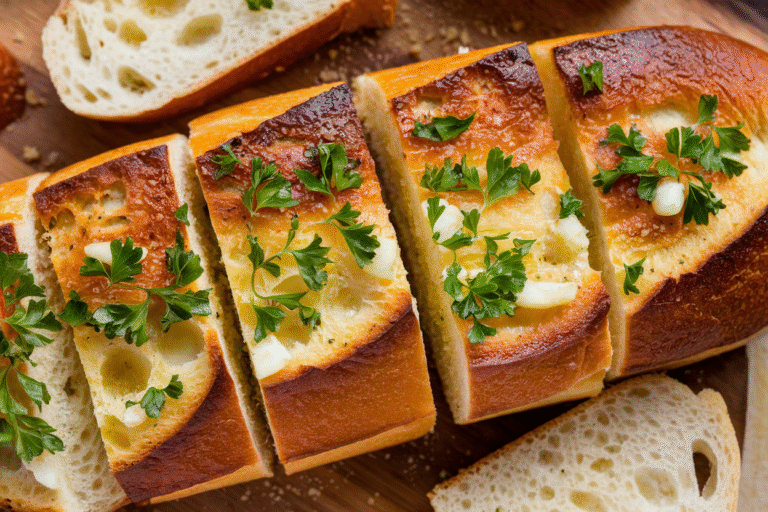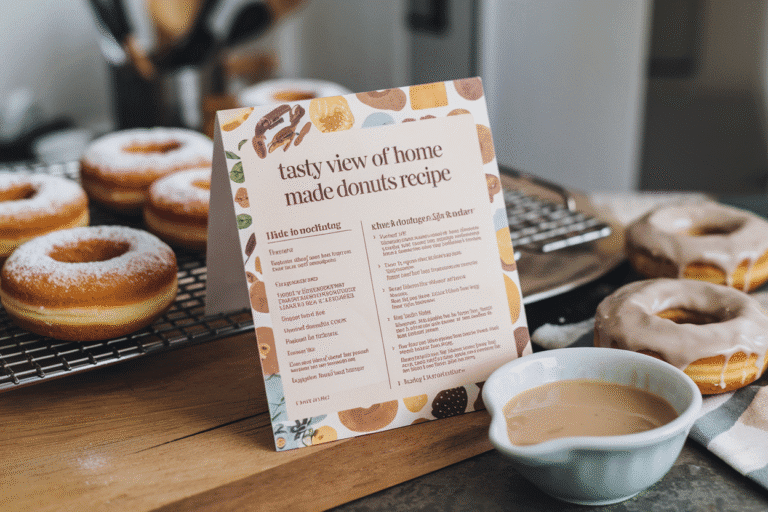Stop Buying Jarred Sauce: This White Pasta Sauce Recipe Will Make You a Weeknight Legend
Forget six-dollar jars and mystery thickeners. This white pasta sauce recipe is fast, rich, and ridiculously smooth—like restaurant-level smooth. You’ll make it once, taste it, and wonder why you ever settled for less.
The secret? A proper roux, real dairy, and just enough heat to coax flavor without burning anything. If you can stir, you can nail this—no culinary school flex required.
Why You’ll Love This Recipe
- It’s fast: 15 minutes from pan to plate.
Your delivery app can’t keep up.
- Ultra-creamy texture: Silky without being gluey—coats every strand like a pro.
- Customizable: Go classic Alfredo, garlicky, herby, lemony, or spicy with one base formula.
- Budget-friendly: Everyday ingredients, premium results. Your wallet will clap.
- True comfort food: Pairs with any pasta, protein, or veggie. It’s a blank canvas with swagger.
What Goes Into This Recipe – Ingredients
- Butter: 4 tablespoons (unsalted), for richness and to build the roux.
- Olive oil: 1 tablespoon, helps prevent scorching and adds flavor.
- Garlic: 3–4 cloves, finely minced (or 1 teaspoon garlic paste).
- All-purpose flour: 3 tablespoons, to thicken the sauce.
- Whole milk: 1 1/2 cups, warmed.
Provides body without heaviness.
- Heavy cream: 1 cup, for that luxurious, glossy finish.
- Parmesan cheese: 3/4 cup, finely grated (Parmigiano-Reggiano preferred).
- Nutmeg: A small pinch, freshly grated for warmth and depth.
- Salt and black pepper: To taste. Freshly cracked pepper hits different.
- Optional boosters: 1/2 teaspoon Italian seasoning, zest of 1/2 lemon, pinch of red pepper flakes, or 1/4 cup dry white wine.
- Pasta: 12–16 ounces (fettuccine, penne, rigatoni, or your favorite), cooked al dente.
- Pasta water: Reserve 1 cup, starchy liquid gold for adjusting consistency.
Instructions
- Cook your pasta: Salt the water aggressively. Cook until al dente.
Reserve 1 cup of pasta water before draining.
- Warm the dairy: Gently heat milk and cream together in a small pot or microwave until warm. This prevents clumping later.
- Start the base: In a large skillet or saucepan over medium heat, melt butter with olive oil. Add garlic and sauté 30–60 seconds until fragrant, not browned.
- Build the roux: Sprinkle in flour.
Whisk constantly for 1–2 minutes until it turns a pale blond and smells nutty. No color change = no raw flour taste.
- Add the liquid: Slowly pour in the warm milk-cream mixture while whisking. Add in two or three additions to avoid lumps.
Keep whisking until smooth.
- Simmer to thicken: Reduce heat to medium-low. Stir frequently for 3–5 minutes until the sauce lightly coats the back of a spoon.
- Season and enrich: Stir in Parmesan, a pinch of nutmeg, salt, and pepper. If using Italian seasoning, lemon zest, red pepper flakes, or white wine (reduce wine for 30 seconds before adding dairy), add now.
- Adjust consistency: If too thick, loosen with reserved pasta water, 2–3 tablespoons at a time, until luxuriously silky.
- Marry pasta and sauce: Add drained pasta to the sauce.
Toss over low heat for 1–2 minutes so the starch binds and everything gets glossy.
- Taste and finish: Adjust salt, pepper, and lemon zest. Serve immediately with extra Parmesan and cracked pepper. Flex accepted.
Keeping It Fresh
- Storage: Refrigerate leftover sauce in an airtight container for up to 3 days.
The sauce will thicken as it cools.
- Reheating: Warm gently over low heat with a splash of milk or pasta water, whisking until smooth. Don’t crank the heat—dairy can split.
- Freezing: Not ideal. Cream sauces tend to separate after thawing.
If you must, freeze without cheese and reheat gently before whisking in Parmesan.
- Make-ahead tip: Prep the roux and refrigerate up to 2 days. Reheat, then whisk in warm dairy and finish as usual.
Why This is Good for You
Comfort food isn’t the villain. This sauce offers calcium from dairy, protein from milk and cheese, and honest satiety that curbs snack raids later.
When you pair it with whole-grain pasta and a pile of veggies or lean protein, you’ve got a balanced plate. Moderation beats deprivation—every time.
Plus, you control the ingredients. No preservatives, no weird thickeners, and you can scale salt or fat to fit your goals.
IMO, that’s real “healthy”: smart choices you actually enjoy.
Avoid These Mistakes
- Burning the garlic: Bitter city. Keep heat moderate and move fast once it hits the pan.
- Skipping the warm dairy: Cold milk into hot roux = lumps. Warm it, whisk slow, and you’re golden.
- Too much heat after adding cheese: High heat can cause grainy sauce.
Keep it low and gentle.
- Overthickening: The sauce tightens as it sits. Make it slightly looser than you think; adjust with pasta water.
- Under-seasoning: Taste at the end. Parmesan adds salt, but you’ll still need a pinch more.
- Using pre-shredded cheese: Anti-caking agents make grainy sauce.
Grate your own for a silky finish (yes, it’s worth it).
Different Ways to Make This
- Lightened-up: Use half-and-half instead of heavy cream and add 2 ounces of reduced-fat cream cheese to keep it creamy.
- Lemon-garlic: Add 1–2 teaspoons lemon zest and a squeeze of juice at the end. Bright, not heavy.
- Herb-forward: Stir in chopped parsley, basil, or chives right before serving for fresh flavor.
- Spicy: Add 1/2–1 teaspoon red pepper flakes with the garlic. Heat lovers, rejoice.
- Mushroom: Sauté 8 ounces sliced cremini in butter until browned, remove, make the sauce, then fold mushrooms back in.
- Chicken or shrimp: Sear seasoned chicken strips or shrimp first, set aside, then build the sauce in the same pan for bonus flavor.
- Cauliflower-creamy (sneaky veg): Blend 1 cup steamed cauliflower with 1/2 cup milk and add to the sauce for extra body and nutrients.
- Gluten-free: Swap flour with 1:1 gluten-free all-purpose blend or use 2 teaspoons cornstarch slurry added after the dairy.
FAQ
Can I make this without heavy cream?
Yes.
Use all whole milk and add 2–3 tablespoons cream cheese for body. Or go half-and-half—still creamy, just lighter.
Why did my sauce turn grainy?
Likely overheated after adding cheese or used pre-shredded Parmesan. Lower the heat, whisk in finely grated cheese slowly, and avoid boiling once cheese is in.
How do I fix a lumpy sauce?
Whisk vigorously and add a splash of warm milk.
If stubborn, use an immersion blender for 10–15 seconds to smooth it out. Happens to the best of us.
What pasta shapes work best?
Fettuccine and tagliatelle for classic vibes; penne, rigatoni, or shells if you want sauce to cling in every nook. Short shapes are great for add-ins like chicken or broccoli.
Can I add wine?
Absolutely.
After the roux, whisk in 1/4 cup dry white wine and let it reduce for 30–60 seconds, then add the warm dairy. Subtle acidity = chef’s kiss.
Is nutmeg required?
No, but a tiny pinch adds warmth and depth. It won’t taste “nutmeggy,” just balanced.
Skip if you must.
How can I make it more flavorful?
Toast the roux to blond, don’t burn the garlic, use good Parmesan, and finish with lemon zest, cracked pepper, or fresh herbs. Salt properly—flavor hides without it.
In Conclusion
This white pasta sauce recipe is the definition of high ROI: minimal effort, maximum comfort, restaurant-level results. Master the roux, warm the dairy, respect the cheese, and you’ll have a sauce that turns any weeknight into a win.
Keep it classic or riff your way to greatness. Your future self (and your dinner guests) will be grateful, FYI.
